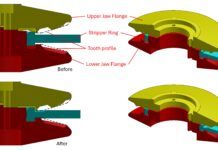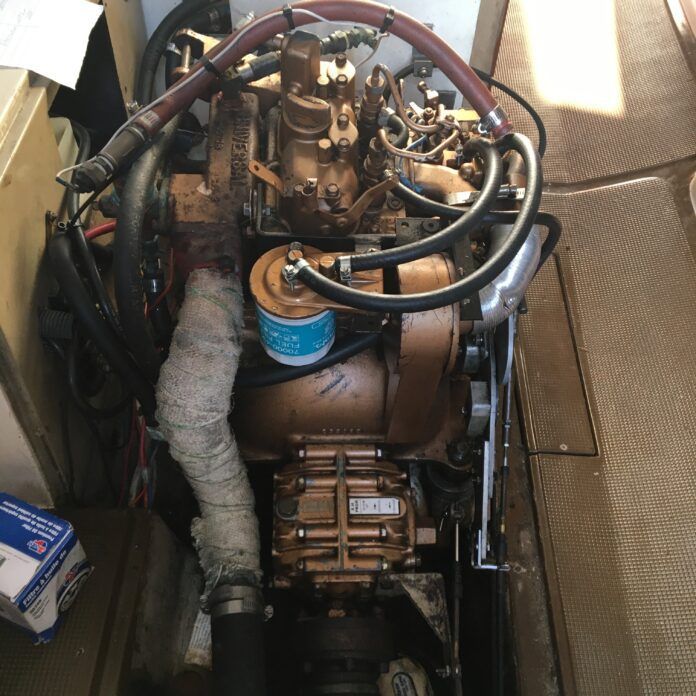Cruising sailors rely on their engines a lot more than they like to admit. Although the internet has helped close the gap between parts suppliers and cruising sailors in far corners of the earth, the long-term cruiser still has to carefully consider which spare parts and supplies he needs to carry with him.
A list of recommended spare parts will vary slightly by what brand you engine you have and where you are cruising. Parts for our old Volvo MD2B were expensive and hard to find anywhere, so my sailing partner and I had to balance our desire to be self-sufficient with our meager budget. In Panama, we were able to scavenge spares from an old MD series engine with a cracked block, saving us hundreds of dollars during the next seven years. Owners of Perkins engines, which are widely supported around the world, would not have to go to the extremes as we did-which included carrying a fully refurbished spare cylinder head (complete with lapped in valves)-but it is smart to have spare consumables like belts and hoses no matter what type of boat you have.
Upon returning from his circumnavigation, former PS Editor Nick Nicholson (no relation), put together his recommendation for spares. I’ve taken some of my own suggestions and added them to his below. I would encourage reading Nick’s full article Offshore Log: Engine Spares for Cruising.
Fuel Filters
We had a Dahl fuel filter, most other boats had Racor. We found fuel filter elements all over the world, but getting the quantity and micron rating we needed was no guarantee. Remember you have at least two filters: a remote primary filter between the tank and the engine, and a factory-installed secondary filter on the engine itself. The secondary filter is typically more difficult to find. Off-brand filters are available, but I hesitate to recommend these, especially for the secondary filter, since using the wrong micron-rating can ruin your fuel injectors or injection pump. If you resort to an off-brand filter, be absolutely positive you are getting an identical match. As Technical Editor Drew Frye’s report on fuel filters revealed, some brands are cheaply made. For prolonged cruising, you can’t go wrong by carrying a dozen of each filter. A load of contaminated fuel can quickly wipe out your supply of spares.
Fuel Injectors
Recommended service intervals for fuel injectors vary by manufacturer, but fuel contamination and carbon build-up is such a common problem that many cruising sailors carry at least one spare injector. If you carry a full set (not cheap) you can still operate your boat while your injectors are being cleaned and serviced. (In the Caribbean, we mailed ours back to the U.S. for servicing). Some cruising sailors even carry a spare injection pump-a relatively expensive item. I never met any cruisers who serviced their own injectors, but below is an interesting video describing a do-it-yourself injector cleaning kit, and how to recognize a proper spray pattern (something we could do in situ with our old hand-cranked Volvo). Note the surprisingly high rate of injector failure among old diesel cars. I don’t have any experience with the Monark injector nozzles the technician in the video describes.
Engine Oil
If you’re picky about engine oil-and you should be-you may find your favorite oil in some countries. Sometimes it is available under a different name, and with a little research you might sort this out. Generally speaking, you’ll be able to find diesel engine oil with the specified American Petroleum Institute (API) certification or its equivalent almost everywhere you can buy fuel. For long-term cruising, carry a minimum for six changes, or about 600 hours of engine operation.
Oil Filters
Oil filters are another issue. There are so many varieties of oil filters in the world that it pays to do a little research. In Vanuatu, we found Napa filters that were identical to our Volvo filters but cost much less, but, again, if you go this route you want to be sure you are getting a high quality filter. As technical editor Drew Frye discovered in his test of fuel filters, two brands fell short of our minimum criteria. When you do find the right filters, buy them. They’re a lot harder to find than engine oil. These filters tend to corrode, even if they are sealed in plastic, so stow them with some silicone beads in a water-tight box.
Nick reported ended up with a whole case of defective Fram filters he had bought in New Zealand, so it is a good idea to check one from a new batch right away to make sure it is working properly.
Belts
You’ll need spare V-belts for you alternator, particularly if its the high-output type. It is almost impossible to judge the quality of a V-belt just by looking, and once you leave the US, it’s harder to find the industrial-rated V-belts that you need for high-output alternators. Most belts you find overseas are fractional-horsepower automotive belts that won’t last long driving a 100-amp alternator, even if you have a dual-belt-drive system (highly recommended high output alternators).
Replace a belt the instant it starts showing sidewall wear or cracking. As a rule, belts for high-output alternators, which have small pulleys in order to increase output, should be replaced every 500 hours of engine operation. Belts driving large pulleys, such as those on refrigeration compressors, will last much longer. Belts are relatively inexpensive, they keep well, and are easy to stow. Leave home with as many as you think you will need for the length of your cruise. Replaced belts that still have some life can serve as spares; just be sure to mark them as used.
Alternators
Alternators have a relatively high rate of failure, but a repair is often as simple as replacing the brushes. Most cruisers replace factory-supplied alternators with high-output models, saving the original factory alternator as a spare. This may sound fine in theory, but swapping between different types of alternator may require changes in alignment, belt length, or even voltage regulation systems. Most stock alternators are internally regulated, while virtually all high-output alternators are externally regulated. To avoid hassles, you can carry at least one spare, identical, high-output alternator, as well as a rebuild kit. We went through one Hitachi alternator and I rebuilt two others. Nick carried three identical Balmar alternators, and used every single one of them. Even if you have nominally identical alternators, pre-fit each one to make sure that there are no installation glitches, and that you understand the process of changing them completely.
Gearbox
Probably the most neglected part of the drive train is the gearbox. Gearbox fluid does not last forever, but how often should you change it? Some engine owner’s manuals don’t even give replacement intervals. Mechanics Nick spoke with said the oil in a common two-shaft gearbox, such as the Hurth, should be changed at least at every other engine oil change, or 200 hours of operation. Make sure you know what type of fluid your gearbox uses-it may be engine oil, automatic transmission fluid, or something else. Like every other consumable, carry enough for at least a year of service.
Water Pumps
Probably our biggest headache was the Volvos raw water pump, an expensive bronze-body model made by Johnson. The raw-water pump impellors and seals generally held up well, but sediment in the water would cause the shaft to wear. If left to its own, this could allow water into the crankcase, precipitating a series of unfortunate (and expensive) events. In shallow silty waters like river basins, this failure, indicated by a tell-tale drip from a weep hole the pump body, might come on relatively suddenly. Once the shaft is worn, a simple seal replacement won’t work. By the end of our cruise, we made sure we had at least five impellors, a dozen seals (two per change), and three spare pump shafts on board-this in addition to complete assembled pump. A quickly removable Speedseal can make rebuilds easy; although we didn’t have one, and now they are no longer available. We found it cheaper to have the pump shafts precision made at a Singapore machine shop than to buy new ones from Volvo. (We did the same thing in Panama, lapping in an intake valve for a Volvo diesel truck that met almost the same specs.)
Although it may seem like a lot of work to actually do a dry-run pump change, you should at least check to make sure you know what is involved, what size wrenches will be needed, and what other bits and pieces may have to be removed in order to change pumps. These types of failures do not occur when you are sitting comfortably at anchor or in a marina.
This is just a preliminary list, but it covers the most common items. For a more detailed list of spares, check out Nigel Calders excellent book dedicated especially to marine diesels: Marine Diesel Engines, Maintenance, Troubleshooting, and Repair. We sometimes stock this book at our bookstore (which also carries Calder’s “Boatowner’s Mechanical and Electrical Manual”). But if it isn’t there, it’s bound to be on Amazon.com.





































I believe the company making SpeedSeal covers shut down several years ago. Is there anyone producing a similar product today?
Compared with the standard V-belt system, a serpentine belt kit will result in a much longer service life and conceivably would reduce the risk of needing an emergency belt replacement, as in a busy shipping channel or near a rocky lee shore.
I am a landlubber coastal sailor. I loved seeing how much work and worry I have avoided. Good luck fellas!